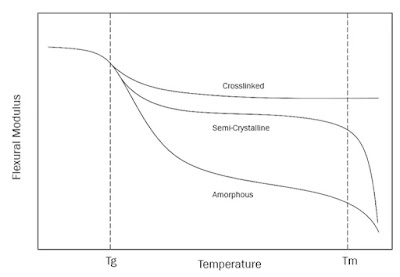‘Is it better to extend the soak or add more firing time when
the firing program isn’t quite enough? What are the meanings of “soak,” “hold,”
“ramp,” “working temperature” and “top temperature”?’
Let’s start with some of the terms.
“Soak” and “hold” have the same meaning in
scheduling. Schedules are made up of a
series of linked segments. Each segment
contains a rate, temperature, and time.
The time is often called a “hold” in the schedules. That time can have several effects. It can allow enough time for a process, such
as slumping, to be accomplished.
Although “soak” is entered into the schedules in the same way
as a hold, it has a different concept behind it. The hold when used as a soak allows the set temperature
to permeate the whole thickness of the glass.
An example is in annealing. An annealing hold/soak is set. This is to allow the glass to become the same
temperature throughout.
The ramp is the rate at which the controller is set to
increase/decrease the temperature. This
is normally the first element in the segment.
“Top” and “Working” temperature are the same
thing. It is the temperature at which
the desired effect is achieved. They
have slightly different nuances. Top
temperature is normally considered as a point where the desired profile will be
achieved in a few minutes. The working
temperature is also that, but includes the idea that it will take time for the
effect to be achieved.
Which should you alter first – soak time or temperature?
Most important is that you alter only one at a time. If you alter the two elements at the same
time, you do not know which was the cause of the result.
In general, you lengthen the soak if the effect is not achieved
at the temperature and in the time set.
There are two reasons for this.
Glass has fewer problems at lower temperatures. Secondly, the controllers are set up in such
a way that it is easy to extend the time. Check your manual for the key
sequence to extend the time. It is more
difficult to alter the temperature during a firing.
To determine if you need more time, you peek into the kiln as the kiln
approaches the top temperature. If the
profile has not been achieved by the time set at your working temperature, you enter
the combination of keys to keep the kiln at the top temperature until you see the
effect you want. Then enter the combination
of keys to skip to the next segment.
Whether you alter
time or temperature, depends on what you are doing. Soak plus temperature equal heat work. With heat work you can accomplish the same
effect at lower temperatures. It may be
that taking more time (usually slower ramp rates) to get to the same or lower
temperature, will give the results desired.
For slumping,
draping and other low temperature processes extending the hold/soak is appropriate. It reduces the amount of marking that is created by
the mould or surface supporting the glass.
When tack, contour,
or full fusing, you should be aiming to finish the work in about 10 minutes.
Soaking/holding significantly longer increases the risk of devitrification.
For high
temperature processes such as pot and screen melts and some flows, increasing
the temperature is probably the right thing to do, to avoid the devitrification
possibilities of long holds of open face high temperature work.
These can only be
guidelines. Your instincts and
experience will help you determine which is the right thing to do in the
circumstances.














